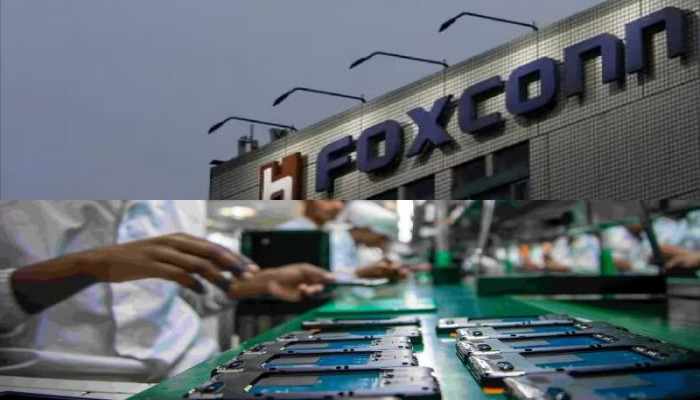Government closely monitoring return of Chinese employees from Indian electronics manufacturing units
- In Reports
- 04:36 PM, Jul 03, 2025
- Myind Staff
Foxconn Technology Group has reportedly asked a number of Chinese engineers and technicians working at its iPhone assembly plants in India to return to China, Bloomberg reported. CNBC-TV18, citing sources, said that the Indian government is closely monitoring the exit of Chinese employees from electronics manufacturing facilities in the country, including Foxconn.
Sources said that companies are allowed to hire staff from any country and that the responsibility of managing and retaining talent lies with each firm’s management.
Quoting CNBC-TV18, the sources added, "The industry can try to address the problem by finding talent in other countries such as Taiwan." The same sources added that the Centre is well aware of the situation and is willing to help businesses in finding and training the local talent.
Bloomberg stated that Foxconn had asked hundreds of Chinese employees working at its iPhone factories in India to return home. The decision is being made at a time when Apple is facing pressure from both the United States and China as it aims to expand iPhone production in India.
Bloomberg also mentioned that Apple plans to increase production of the new iPhone 17 with the support of its manufacturing partners in India and that Foxconn is currently building a new iPhone plant in the southern part of the country.
The report further said that most of the Chinese workers at Foxconn’s iPhone factories in southern India were told to return home. This process reportedly began two months ago. So far, around 300 Chinese workers have already returned, and most of the remaining staff are Taiwanese.
Earlier in 2025, the Chinese government directed its regulatory bodies and local authorities to limit technology transfers and the export of manufacturing equipment to India and Southeast Asia. China has grown increasingly concerned as more companies consider moving their production elsewhere, and is trying to stop that trend.
Bloomberg reported that analysts believe this step reflects China’s growing unwillingness to allow skilled labour and essential technology to be used outside the country.
In a related development, as part of the wider 2025 reforms, the Ministry of Defence is expected to bring in an outside agency to check the truth behind claims of indigenous content, to trace where companies are sourcing their materials from, and to review the cost structures and processes for transferring technology.
Speaking at a recent event, Major General C.S. Mann, Additional Director General of the Army Design Bureau, repeated the Army’s goal of removing Chinese components from its supply base. He said that reducing dependence on foreign sources, especially China, continues to be a major aim to reduce security threats.
The Army is also making efforts to find and promote Indian firms that can produce important parts within the country under the “Make in India” programme.
This new review has been introduced as concerns grow that some vendors have overstated the amount of local content in their products, with key parts often found to be from China and sometimes routed through other nations. Drones and anti-drone systems are among the key items now facing deeper checks.
The consultants brought in by the ministry will also look at who holds the patents and will examine cases where private companies may have submitted unrealistically low development costs, which could lead to high costs later on.
Following Operation Sindoor, the ministry has been speeding up the process of getting new equipment and has been more cautious with vendors suspected of using Chinese parts in items meant for frontline soldiers.
In February, the ministry called off some drone purchases after Chinese parts were found in them and said it was because of national security concerns. With the new review underway, officials believe that more defence equipment could now face close checks to make sure it meets all security rules.







Comments